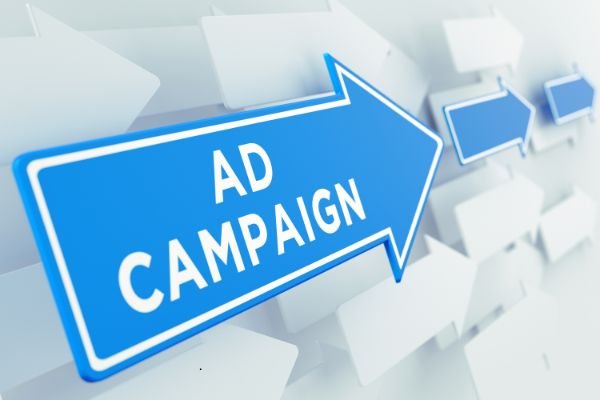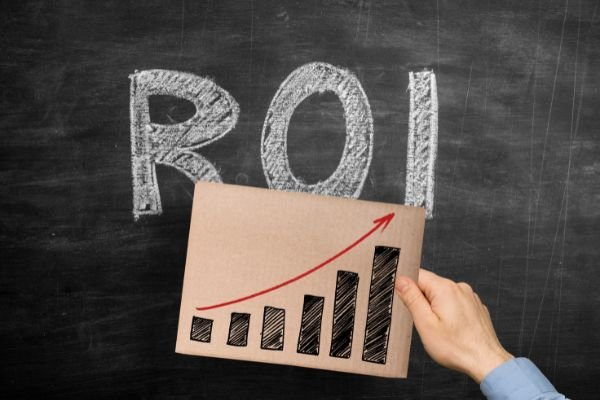The Google Ads ROI Playbook: Complete Strategy Guide
Google Ads strategy in 2025 requires three core elements for success. First, align campaign objectives with business goals. Second, implement data-driven optimization consistently. Third, focus on profitability over vanity metrics. This approach transforms advertising spend into predictable revenue growth. Eclipse Marketing helps businesses master these fundamentals daily.
Sarah managed Google Ads for her fitness equipment store. She spent $5,000 monthly but saw minimal returns. Her campaigns targeted broad keywords like “exercise equipment.” She ignored quality scores and conversion data. Competitors with smaller budgets outperformed her consistently. Her cost per acquisition exceeded product margins. She nearly abandoned Google Ads entirely. One strategic overhaul changed everything. Her ROI increased 312% within three months.
Modern Google Ads success demands strategic thinking beyond basic setup. This guide reveals proven frameworks for maximizing return on investment. You’ll discover how strategic planning drives sustainable growth.

Understanding Google Ads Fundamentals in 2025
The Auction System Explained
Google Ads operates as an auction-based advertising platform. Advertisers bid on keywords relevant to their products or services. The platform displays ads based on bid amount and quality score. Users click ads that match their search intent. Advertisers pay only when someone clicks their ad. This pay-per-click model ensures cost efficiency. The system rewards relevant, high-quality advertisements with lower costs.
Quality Score Components
Quality Score remains the most critical factor for success. Google evaluates three components: expected click-through rate, ad relevance, and landing page experience. Higher scores reduce cost-per-click significantly. A score of 10 can cost 50% less than a score of 5. Smart advertisers prioritize quality improvements over bid increases. This approach maximizes budget efficiency across all campaigns. Google’s official Quality Score guide explains these factors in detail.
Campaign Types and Objectives
The platform offers multiple campaign types for different objectives. Search campaigns capture high-intent users actively seeking solutions. Display campaigns build brand awareness across millions of websites. Shopping campaigns showcase products directly in search results. Video campaigns engage audiences on YouTube and partner sites. Performance Max campaigns use AI to optimize across all channels. Each type serves specific stages in the customer journey.
Machine Learning Impact
Machine learning transforms how campaigns operate in 2025. Google’s algorithms analyze billions of signals in real-time. They adjust bids automatically based on conversion probability. Smart Bidding strategies outperform manual management consistently. The system learns from every interaction and improves continuously. Advertisers who embrace automation see better results with less effort.

Building Your Strategic Foundation
Setting Clear Business Objectives
Successful Google Ads campaigns start with clear business objectives. Define specific, measurable goals before creating any campaigns. Revenue targets work better than traffic metrics. Set realistic timelines for achieving each milestone. Document your objectives to maintain focus during optimization. Review and adjust goals quarterly based on performance data.
Target Audience Research
Target audience research forms the backbone of effective campaigns. Identify your ideal customer’s demographics, interests, and behaviors. Understand their pain points and purchase motivations deeply. Map search terms to different stages of their buying journey. Create detailed buyer personas for each customer segment. Use this research to inform every campaign decision. Think with Google’s consumer insights provides valuable audience data.
Competitive Analysis Strategies
Competitive analysis reveals opportunities and threats in your market. Study competitor ads, keywords, and landing pages thoroughly. Identify gaps in their strategies you can exploit. Monitor their promotional patterns and seasonal adjustments. Use competitive intelligence tools for deeper insights. Position your campaigns to highlight unique value propositions.
Budget Planning and Allocation
Budget allocation requires strategic thinking beyond daily limits. Calculate your maximum acceptable cost per acquisition first. Work backwards to determine appropriate campaign budgets. Allocate more budget to proven performers. Reserve 20% for testing new opportunities. Adjust budgets based on performance data weekly. Consider seasonal fluctuations in your planning.
Conversion Tracking Setup
Conversion tracking setup enables data-driven decision making. Install tracking codes on all conversion actions correctly. Track phone calls, form submissions, and purchases separately. Assign accurate values to each conversion type. Set up enhanced conversions for better attribution. Test tracking regularly to ensure accuracy. Without proper tracking, optimization becomes guesswork.

Implementing Advanced Campaign Strategies
Campaign Structure Best Practices
Campaign structure impacts performance more than most realize. Organize campaigns by product categories or service types. Create tightly themed ad groups within each campaign. Limit each ad group to 15-20 closely related keywords. This structure improves relevance and quality scores. It also simplifies management and optimization efforts. Web design services benefit from dedicated campaign structures.
Keyword Strategy Evolution
Keyword strategy in 2025 emphasizes intent over volume. Focus on commercial and transactional search terms primarily. Long-tail keywords often deliver better ROI than broad terms. Use exact match for core terms with proven performance. Employ phrase match for discovering new opportunities. Negative keywords prevent wasteful spending on irrelevant searches. Review search term reports weekly for optimization opportunities. WordStream’s keyword research guide offers advanced selection techniques.
Ad Copy That Converts
Ad copy must grab attention within limited character counts. Write headlines that address specific user pain points. Include your unique value proposition in every ad. Use numbers and statistics to build credibility. Create urgency without seeming pushy or desperate. Test multiple ad variations to find top performers. Dynamic keyword insertion can improve relevance when used carefully.
Landing Page Optimization
Landing page optimization directly impacts campaign profitability significantly. Ensure message match between ads and landing pages. Load speed affects both quality score and conversions. Mobile optimization is non-negotiable in 2025’s mobile-first world. Clear calls-to-action guide visitors toward conversion goals. Remove distractions that prevent users from converting. Test different layouts to maximize conversion rates.
Smart Bidding Integration
Advanced bidding strategies leverage Google’s machine learning capabilities effectively. Target CPA bidding works well for lead generation campaigns. Target ROAS suits e-commerce businesses with varying product values. Maximize conversions helps when building initial data. Enhanced CPC provides a balanced automation approach. Each strategy requires sufficient conversion data to perform optimally. Understanding advanced bidding strategies for Google Ads in 2025 transforms campaign performance dramatically.

Maximizing ROI Through Optimization
Daily Optimization Routines
Daily optimization routines separate successful advertisers from struggling ones. Check campaign performance against yesterday’s metrics first. Identify any significant changes requiring immediate attention. Review search term reports for new negative keywords. Adjust bids based on performance trends. Monitor quality scores for improvement opportunities. Address any disapproved ads or extensions promptly.
A/B Testing Framework
A/B testing reveals what truly resonates with your audience. Test one element at a time for clear results. Headlines often provide the biggest improvement opportunities. Try different value propositions and emotional triggers. Test various call-to-action phrases and button colors. Landing page tests can double conversion rates. Document all tests and their results systematically. Google Ads management requires continuous testing for growth.
Performance Analysis Methods
Performance analysis goes beyond surface-level metrics like clicks. Calculate true return on ad spend including all costs. Segment data by device, location, and time. Identify patterns in your best-performing campaigns. Understand which audiences deliver highest lifetime value. Track assisted conversions for complete attribution understanding. Use custom reports to monitor KPIs efficiently. Search Engine Land’s analytics resources help decode complex data patterns.
Budget Optimization Techniques
Budget optimization ensures every dollar works hard for you. Shift budget from underperformers to winning campaigns quickly. Use shared budgets for flexible allocation. Set up automated rules for bid adjustments. Pause keywords with high cost and low conversion rates. Increase investment in campaigns exceeding ROI targets. Review budget allocation weekly for maximum efficiency.
Scaling Winning Campaigns
Scaling successful campaigns requires careful strategic planning always. Increase budgets gradually to maintain performance stability. Expand keyword lists with closely related terms only. Test new ad groups before major expansions. Add new geographic targets one at a time. Monitor quality metrics during all scaling efforts. Rapid scaling often hurts performance significantly. Understanding Essential Google Ads metrics to track and what they mean guides smart scaling decisions.

Leveraging Automation and AI Features
Smart Bidding Revolution
Smart Bidding revolutionizes campaign management through artificial intelligence. The system analyzes countless signals invisible to humans. It adjusts bids in real-time for optimal results. Device, location, and time patterns influence every decision. User behavior signals improve targeting precision dramatically. Conversion probability calculations happen in milliseconds. Manual bidding cannot compete with this sophistication level.
Responsive Search Ads Benefits
Responsive Search Ads adapt to user searches dynamically. Provide multiple headlines and descriptions for testing. Google combines elements based on search queries automatically. This format typically improves click-through rates significantly. The system learns which combinations perform best. More variations give the algorithm better optimization options. Traditional expanded text ads became obsolete for good reason.
Automated Insights and Recommendations
Automated insights surface opportunities you might miss otherwise. The platform identifies trends and anomalies automatically. Recommendations range from budget adjustments to new keywords. Not all suggestions merit implementation immediately. Evaluate each recommendation against your strategy carefully. Custom alerts notify you of significant changes. This automation saves hours of manual analysis time. Marketing Land’s automation coverage explores emerging capabilities thoroughly.
Performance Max Campaigns
Performance Max campaigns represent the future of advertising. One campaign type reaches users across all Google properties. Machine learning optimizes creative, targeting, and placements simultaneously. Asset quality directly impacts campaign performance significantly. Provide diverse creative options for best results. These campaigns complement traditional search efforts effectively. SEO services work synergistically with Performance Max campaigns.
Scripts and Rules Automation
Scripts and rules automate repetitive management tasks efficiently. Pause low-performing keywords based on preset criteria. Adjust bids according to weather or stock levels. Send alerts when campaigns need attention urgently. Generate custom reports for stakeholder updates. Advanced scripts can manage complex optimization logic. Start with simple automations before advancing further.

Future-Proofing Your Google Ads Strategy
Privacy-First Advertising
Privacy changes reshape digital advertising fundamentally in 2025. Third-party cookies continue their phase-out process. First-party data becomes increasingly valuable for targeting. Consent management affects audience sizes significantly. Privacy-safe solutions like enhanced conversions gain importance. Advertisers must adapt strategies for this new reality. Building direct customer relationships matters more than ever.
AI Advancement Opportunities
AI advancement accelerates campaign capabilities beyond current imagination. Natural language processing improves ad relevance dramatically. Visual recognition enhances shopping campaign performance. Predictive analytics forecast customer behavior accurately. Voice search optimization becomes standard practice. Staying informed about AI developments ensures competitive advantage. Early adopters of new features typically see better results.
Cross-Channel Integration
Cross-channel integration maximizes overall marketing effectiveness significantly. Google Ads data informs other marketing channels. Social media insights improve search campaign targeting. Email lists create powerful remarketing audiences. Offline conversions complete the attribution picture. Unified reporting reveals true marketing impact. Siloed channel management limits growth potential severely.
Emerging Ad Formats
Emerging ad formats offer new engagement opportunities constantly. Interactive ads increase user engagement rates. Shoppable ads streamline the purchase process. Augmented reality ads showcase products innovatively. Video formats expand beyond YouTube rapidly. Testing new formats early provides competitive advantages. Innovation in ad formats continues accelerating annually.
Continuous Learning Requirements
Continuous learning keeps your skills sharp and relevant. Google releases new features and updates regularly. Industry best practices evolve with technology changes. Successful advertisers invest in ongoing education. Certifications demonstrate expertise to clients and employers. Join communities of Google Ads professionals. Contact our team for advanced training opportunities. Knowledge truly powers sustainable success.
FAQ
What budget do I need to start with Google Ads?
Starting budgets vary based on industry and competition levels. Most businesses begin with $1,000-$3,000 monthly. This allows meaningful testing and optimization. Calculate budgets based on your customer lifetime value. Start conservatively and scale with success.
How long before I see results from Google Ads?
Initial data appears within days of launching campaigns. Meaningful optimization requires 2-4 weeks typically. Full performance potential emerges after 2-3 months. Machine learning algorithms need conversion data to optimize. Patience during the learning phase pays off.
Should I manage Google Ads myself or hire an agency?
Small budgets under $5,000 monthly can self-manage successfully. Larger budgets benefit from professional management expertise. Agencies provide strategic insights and time savings. Consider your available time and expertise level. Many businesses start solo then transition to agencies.
What’s the difference between Google Ads and SEO?
Google Ads provides immediate visibility through paid placements. SEO builds organic rankings over months or years. Ads stop when budgets pause completely. SEO maintains rankings with ongoing effort. Both channels complement each other effectively. SEO services enhance overall search visibility.
How do I know if my campaigns are profitable?
Track revenue generated against total ad spend. Include all costs like management fees. Calculate return on ad spend (ROAS) regularly. Profitable campaigns exceed your target ROAS consistently. Factor in customer lifetime value for accuracy.

Mike has over 5 years of experience helping clients improve their business visibility on Google. He combines his love for teaching with his entrepreneurial spirit to develop innovative marketing strategies. Inspired by the big AI wave of 2023, Mike now focuses on staying updated with the latest AI tools and techniques. He is committed to using these advancements to deliver great results for his clients, keeping them ahead in the competitive online market.
